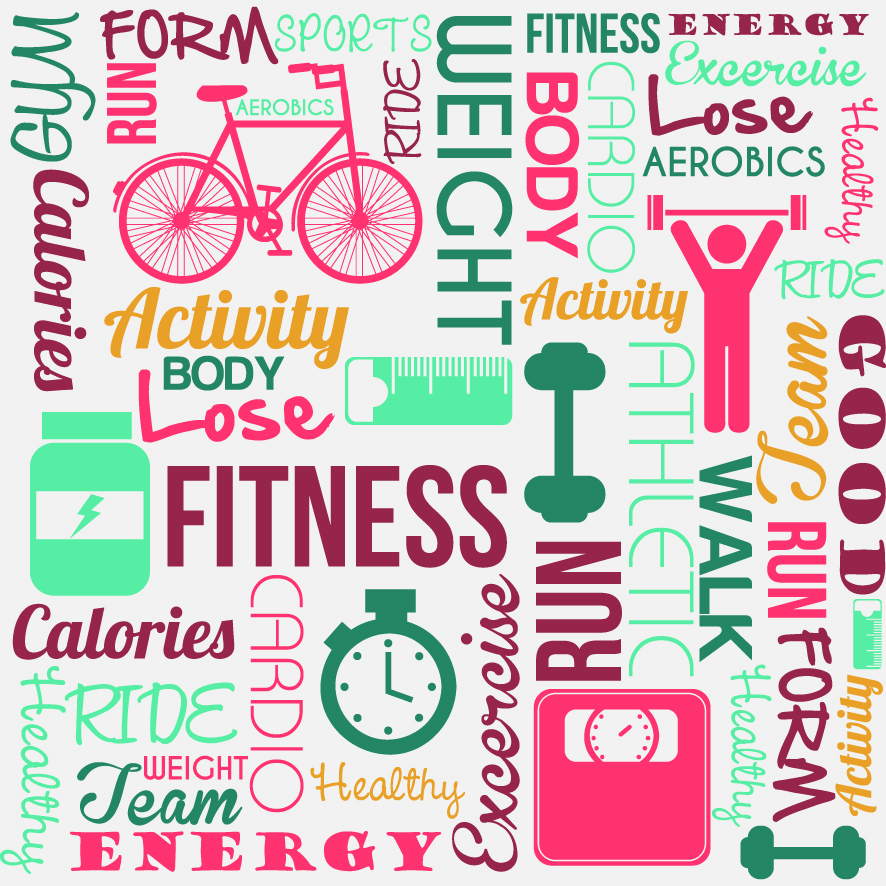Fitness
How Biology Influences Fitness: Personalized Exercise

Getting enough physical activity can make both your body and mind feel better. It can also help prevent or delay health problems. Now, researchers are looking for ways to find out which exercises may best suit your body.
Different types of exercise can bring different health benefits. You can strengthen your bones with weights. Increase your flexibility with stretching. Or, improve your heart health with aerobic activity.
But people’s bodies are built differently. Some people have more of the type of muscle that provides strength. Others have more of the type that provides endurance, which keeps you moving for a long period of time. This is one reason why people may be naturally suited to different sports.
But this idea doesn’t just apply to athletes. It affects people getting physical activity for fitness, too.
“There are a variety of reasons why different people might adapt better to different types of exercise training,” says Dr. Marcas Bamman, an exercise researcher at the University of Alabama at Birmingham. “And an important factor that we’re starting to learn more about is our genes.”
Researchers are studying how genes influence our bodies’ responses to physical activity. They’re also looking at how exercise affects people’s bodies differently. They’re even exploring how it affects your microbes.
“The end goal is to be able to provide an exercise “prescription” that is optimal for each person, so they can gain the most benefit,” Bamman says.
Influenced by Genes
Scientists know that different types of exercise have different effects on health, explains Dr. William Kraus, who studies heart disease prevention at Duke University. “The benefits vary by type, intensity, and amount of exercise,” he says.
For example, his lab has observed that long bouts of moderate-intensity exercise, like brisk walking, may be especially good at lowering blood sugar levels. This can be important for people trying to prevent diabetes.
But maybe you want to reduce the levels of “bad” cholesterol in your blood to help prevent a heart attack. For that, a lot of high-intensity exercise to get your heart pounding may help the most, Kraus adds.
His team has observed these effects across ages and for both men and women. But when you look at individuals within those groups, he says, not everyone gets the same benefit from the same workout.
“We want to understand how your genetic background determines your response to exercise,” he says. His research team has identified a set of genes that predict who will get the biggest improvements in heart health from aerobic exercise, like jogging or cycling.
Bamman’s team has found a set of genes that may help predict who would gain the most muscle from a strength training program. But, he explains, just because you may not get the same benefits as someone else from one type of exercise doesn’t mean you don’t get any.
“Everybody responds to exercise in a positive way,” Bamman says. “For example, people who couldn’t gain muscle as well as other people still gained strength in our study. They still improved walking ability and a lot of other important aspects of health.”
Researchers are looking for other genes that may predict how exercise affects different aspects of health, like blood sugar control. In one study, Kraus and his team tested an exercise program to reduce the risk of diabetes in a large group of people.
“Some people got a great improvement controlling their blood sugar, and some people got none, even though they did all the exercise,” he says.
Knowing who’s most likely to benefit from specific exercises may help health care providers better tailor their recommendations for people, says Kraus.
But these studies are still in the early stages. If you have a health condition, talk with your provider about the types and amounts of physical activity that are safe for you.
Learning From Athletes
“There really is almost no health intervention as potent and as broad in its benefit as physical activity,” says Dr. Euan Ashley, who studies exercise and the heart at Stanford University.
Ashley, Bamman, and Kraus are involved in a large NIH-funded program looking at how exercise affects different molecules in the body. They’re also exploring how this differs between people. The team is studying both people who have previously not exercised regularly and active athletes.
Studying the abilities of elite athletes has the potential to help us understand the upper limits of the human body, Ashley explains.
“For an athlete to perform at the absolutely highest level, everything has to work perfectly,” he says. This includes the muscles, heart, blood cells, and more. Studies of athletes, such as runners and skiers, have found genetic differences that have positive effects on their bodies’ performance, Ashley says.
“By studying athletes, we can learn more about the extremes of each of these body systems. And by understanding the extremes, we can understand fundamental aspects of those systems. That could help us treat people with diseases in those systems,” explains Ashley.
The Role of Microbes
It’s not only your biology that can influence how exercise affects your body. Scientists are discovering more and more about the role of your microbiome. That’s the collection of microbes that live in and on your body.
In a recent study, researchers found changes in a certain type of gut bacteria in marathon runners. They transferred those bacteria into mice. The mice given the bacteria were able to run longer.
Scientists are only beginning to study the microbiome’s role in fitness. Such studies are difficult, because things like diet, sleep, and even the people you live with can affect your microbiome, Kraus says.
Researchers continue to learn more about biology and physical activity. But no matter who you are, how much activity you get can make a difference for your health. Experts recommend getting at least 150 minutes of moderate to vigorous physical activity a week. And at least two days a week, do strength training exercises.
“There are huge benefits from exercise for both mental and physical health,” says Ashley. Find ideas for how to get started.
Personalize Your Workout:
- Know your goals. Try to set specific short- and long-term goals. Then talk with your health care provider about the types and amount of exercise you can safely do.
- Do what you enjoy. Don’t struggle with a workout you hate. Build in activities that make both your body and brain feel good.
- Find a partner. Ask a family member or friend to be active with you. Activity may be more fun with someone.
- Track your progress. You might not feel as though you’re making progress, but you may be pleasantly surprised if you look back at where you started.
Review your goals. Did you meet your goals? If not, why? Are they doable? Brainstorm some options of what to do differently.

Fitness
Dancing your way to fitness: Study shows health benefits of free-form dance are comparable to conventional exercise

Forget sneakers or cleats and put on those boogie shoes, as new research from Northeastern University finds that dancing can have the same health benefits as running and other forms of exercise.
“You don’t necessarily need to have music, you don’t need to have any training or a teacher, anyone—ostensibly—can dance right where they are and get a health-enhancing dose of physical activity,” says Aston McCullough, assistant professor of physical therapy, human movement and rehabilitation sciences at Northeastern.
McCullough’s research on this topic appears in the journal PLOS ONE.
Scientists have long known that dancing has many benefits, improving everything from heart health and balance to flexibility and psychological well-being.
But McCullough notes that prior studies have not measured the “dose” of free-form dance given—leading to questions about how intensely people move when dancing however they wish, and whether free-form dance is enough to reach a moderate or vigorous intensity.
Prior studies have also focused primarily on specific types of dance—for instance, ballet or hip-hop.
McCullough wanted to take a different approach—focusing not on trained dancers practicing an established style, but the everyday person who just likes to boogie down.
“We wanted to do a study that could give us the most bang for the buck, if you will,” McCullough says. “We said that anyone who comes in can do whatever they want—just dance however you want to dance. In that way, it automatically increases the public health relevance of the study.”
So McCullough gathered roughly 50 participants ranging in age from 18 to 83 years old and had zero to 56 years of dance training experience. Then he let them cut a rug for five-minute intervals at self-determined moderate and vigorous levels, both with and without self-selected music.
Meanwhile, McCullough measured their heart rates, perceived exertion and oxygen levels. He found that whether in a club, on your own or even in the dark, getting down can get your heart rate up.
McCullough found that dancing—even without music—expended enough energy to reach the recommended moderate to vigorous physical activity intensities. Being trained in dance had no effect on the energy expended, and the music led participants to dance more intensely.
McCullough says the research is exciting because it means that dancing—wherever, whenever, however—counts toward the Office of Disease Prevention and Health Promotion’s recommendation that adult Americans get at least 150 minutes of moderate physical activity, or at least 75 minutes of vigorous activity, or some combination of the two, a week.
“People can dance without leaving their homes, people can dance without leaving a chair,” McCullough says. “So, in that way, we’re really excited about the benefits of dance for all people. Whatever may be your preferred way to dance, just make sure you have enough space around you to dance safely.”
Alas, dance may not be the perfect exercise.
The Office of Disease Prevention and Health Promotion also recommends that adults do muscle-strengthening activities such as resistance training or weight training two days a week.
“Some dance forms may include bodyweight resistance training, like breakdancing,” McCullough says. “But more research is needed on bodyweight resistance training and dance.”
More information:
Aston K. McCullough et al, Absolute and relative intensities of solo, free-form dancing in adults: A pilot study, PLOS ONE (2024). DOI: 10.1371/journal.pone.0313144
Northeastern University
This story is republished courtesy of Northeastern Global News news.northeastern.edu.
Citation:
Dancing your way to fitness: Study shows health benefits of free-form dance are comparable to conventional exercise (2025, February 24)
retrieved 24 February 2025
from https://medicalxpress.com/news/2025-02-health-benefits-free-conventional.html
This document is subject to copyright. Apart from any fair dealing for the purpose of private study or research, no
part may be reproduced without the written permission. The content is provided for information purposes only.
Fitness
Fitness Pros Say These Are the Best Exercise Bikes for Seniors

Hopping on a stationary bike is a great workout that’s accessible to people of all ages and fitness levels. A low-impact cardio exercise that’s easy on joints makes it ideal for those over 65, or those with joint pain and mobility issues. The best exercise bikes for seniors take all of this into account, allowing everyone to reap the many benefits of indoor cycling.
“Exercise bikes are great for cardiovascular health for seniors. They are non-weight-bearing which allows repetitive motion in the hip and knee joints without the added stress of gravity, joint impact forces, and joint compression,” says Karena Wu, P.T., D.P.T., physical therapist and owner of ActiveCare Physical Therapy. “The movement of the legs can help mobilize the joint fluids which helps to nourish the joints. This can create increased joint mobility and reduced stiffness. Pushing against resistance will work the muscles, keeping or making them strong.”
Meet the Experts: Karena Wu, P.T., D.P.T., physical therapist and owner of ActiveCare Physical Therapy; and Jim White, R.D.N., A.C.S.M. Ex-P, owner of Jim White Fitness and Nutrition Studios
Experts generally recommend recumbent exercise bikes for seniors, which feature a reclined seat and a backrest for support. “Recumbent exercise bikes are best for seniors especially dealing with joint pain, back issues, or balance concerns. This is due to the reclined seat that lessens stress on the lower back, lower pedal position which puts less stress on the knees and hips, and step-through design that makes it easier to get on and off,” explains Jim White, R.D.N., A.C.S.M. Ex-P, owner of Jim White Fitness and Nutrition Studios.
Ahead, we rounded up the best exercise bikes for seniors, recommended by our fitness experts and highly rated by online reviewers. Shop top picks below that feature comfortable, ergonomic seats, a user-friendly design, and adjustable resistance levels for a customizable workout.
” data-next-head/>


























